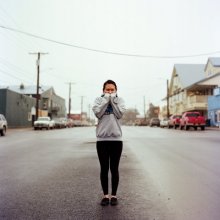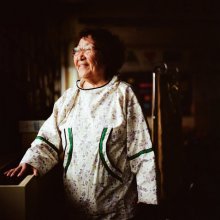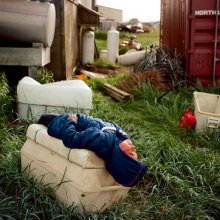Environmental Issues New York Times

Breaking Stereotypes of Alaska’s Inuits
Credit Brian Adams
Mar. 8, 2017Mr. Adams, who is part Inupiat, spent about a year answering that question as he pursued his project “I Am Inuit.” The Inuit Circumpolar Council, which commissioned the project as a social media campaign, asked Mr. Adams to model it after “Humans of New York, ” but with Inupiat and Yupiit residents of 20 villages.
Though Mr. Adams lives in Anchorage, his father’s family is originally from Kivalina. So when he was asked “Who is your family?” his answer opened doors.
“We wanted to break through stereotypes of what people typically see of Alaskan Inuit, ” said Mr. Adams, whose images are at the Anchorage Museum through Sept. 17. “There are so many articles about climate change and environmental issues and social issues here in Alaska that this was an opportunity for people to speak directly for themselves.”
PhotoJessica Gologergen is St. Lawrence Island Yupik from Nome, Alaska. “I work two jobs here, at the coffee shop, and evening shifts at the rec center. I am saving up to go back to Hawaii and do modeling.”Credit Brian Adams Those stereotypes, often featuring desolate landscapes, igloos and fishing rods, are spread by the many “reality” productions that have descended on Alaska.
Those stereotypes, often featuring desolate landscapes, igloos and fishing rods, are spread by the many “reality” productions that have descended on Alaska. These shows often represent the Arctic as an “unpopulated place, untouched, a white nothingness, ” said Julie Decker, the museum’s director.
These shows often represent the Arctic as an “unpopulated place, untouched, a white nothingness, ” said Julie Decker, the museum’s director.
“There are 30 TV reality shows about Alaska right now, ” Ms. Decker said. “There is a huge proliferation, so we are aware of this perception that gets imported and exported about the Arctic. What’s important about this project to us is to present the authenticity of people and place.”
The first village Mr. Adams visited was Quinhagak. He then traveled to 19 other villages, uploading the results to social media in real time. Granted, he faced some logistical problems very different from what confronted Brandon Stanton in creating “Humans of New York.”
PhotoLudwina Jones, Yupik Language Immersion Teacher at the Ayaprun Elitnaurvik School in Bethel, Alaska. “You can be a real Yupik even if you don’t speak your language, because what if the opportunity to speak it wasn’t there?” She told the photographer. “But yet you live your subsistence lifestyle — that’s Yupik.”Credit Brian Adams“Everywhere you go in Alaska, you pretty much have to fly, ” Mr. Adams said. “There are not a lot of villages or towns that are on roads here, in particular Inuit villages. They are all off the road system. You have to fly to all of them, or they’re close enough to each other for a snowmobile.”
He always takes the photo first, before the interview. He uses only film, either with a Hasselblad or a Mamiya 6, “very obvious cameras, ” he said.
But he also captured a boy playing basketball, and other pleasant everyday moments. Indeed, most of his images and interviews have a positive vibe, in contrast to “Humans of New York, ” which often focuses on experiences of hardship.
“I am the captain’s wife, second in authority — actually, first from what I was told, ” Marie Rexford said to Mr. Adams. In her portrait, she stands proudly over that day’s muktuk, a traditional Inuit meal of frozen whale skin and blubber.
PhotoMakayla Nayokpuk watching her father, Dennis Davis, operate his drone in Shishmaref, Alaska. 2016.Credit Brian AdamsThese are not images of exotic places and quaint people. Mr. Adams offers more intimate views, thanks to his background.
“What I’d most like to be my life’s work is portraying Alaska Native people, my people, in a way that hits as close to objective reality as possible, ” he said. “These people have a rich culture that has a painful past, too. There is hardship and there is pride. There is beauty in the land. Culture is not stagnant, and there is always change. I think a lot of people forget that when documenting indigenous peoples and are just so shocked or excited by traditional culture that they don’t see the even more interesting story of resilience and growth and change.”




